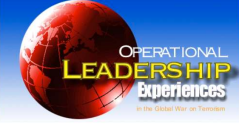 Army Major Michael Yeager has deployed three times to Afghanistan and Iraq, most recently to Afghanistan in 2010 as a special operations planner for the Combined Forces Special Operations Component Command.
Army Major Michael Yeager has deployed three times to Afghanistan and Iraq, most recently to Afghanistan in 2010 as a special operations planner for the Combined Forces Special Operations Component Command.
But in this recently-posted March interview with the Combat Studies Institute at Fort Leavenworth, Kansas, he spoke mostly about his initial deployment to Iraq in 2004 – and what surprises awaited him there. Highlights:
When we arrived in January of 2004, it was no doubt that there was — well, there might have been an official doubt — but for us there was no doubt that there was insurgency. Improvised explosive devices were a big issue. An Iraqi with a cell phone was the most dangerous thing that we could imagine seeing, just given the environment and the threat at the time.
I know that it became a much bigger deal later but the lack of armor; we were running around in high mobility multi-purposed wheeled vehicles (HMMWVs). We took the doors off of the HMMWVs because they were canvas and they weren’t going to protect you from anything. We figured our own real defense was having as many guns sticking out of the side of these HMMWVs.
We became very MacGyver like in that we were stringing things across the doorways so that we could hang light machine guns off of the sides. It had to have looked like something from a movie scene, watching us drive through because we would be wearing goggles, elbow pads and kneepads with rifles hanging out. It probably looked like we were driving around to take somebody down.
That was how we would drive for 16 hours a day or something like that. It was interesting because a couple of times we got into areas where we thought, “This is a really bad idea. We shouldn’t be here.” [Laughter]…
I will say what surprised me the most was how — I don’t want to say that we were unprepared but I think that would be the best way to explain it.
Getting my commission in 1997, being in a military establishment since 1992, we were still Cold War — well, technically, the Cold War had ended in 1989 and 1990, but we were still in Cold War training.
When I was a tank platoon leader, I was memorizing flash cards for Soviet armored vehicles. From the platoon up to the brigade level, we were fighting a Soviet inspired enemy.
Deploying to Iraq, the difference between what I spent a huge amount of my time preparing for and then getting to Iraq, seeing the threat, not having a front line, not knowing that there was an enemy force maneuver and your intel was painting you that picture of a predictable enemy as they moved forward.
What caught myself and my peers by surprise was little things like deploying to NTC [the National Training Center, in California], you got so used to the routine, again, for lack of a better word, the routine of the environment and having a map. Still today, I have the NTC map. I could still tell you how to get around the NTC from point A to point B. I could still look at the map and point out every terrain feature as a guide.
When we got to Iraq, we were getting 8 1/2 x 11 sheets of a printed map. This wasn’t a map that you could stick a protractor on and try to navigate or getting a grid for a night line MEDEVAC.
The lack of maps was probably one of the bigger surprises. On one of these missions, we were trying to get from Baghdad to — I don’t recall the city but it was an area in between Karbala and Najaf in the southwestern part of the country but we didn’t have a map sheet; there wasn’t a larger map for which I could leave Baghdad with to navigate off of…
Not only that, but the maps weren’t accurate. Even the ad hoc maps that we were given had interstates that would keep on going but then we would get there and the interstates had just disappeared. Saddam Hussein’s government may have ran out of money or didn’t want to finish the highway. Even though it was an interstate on the map, there was an unfinished bridge.
When you are out in the middle of nowhere, and there is only a couple of you and you begin to think, “Where do I go next?”
There were a couple of times that we would roll through towns that weren’t on the map. What surprised me was the different nature of this threat, this environment.
The fact that we were the greatest military in the world — I had probably been better prepared travelling somewhere in the United States, going from Fort Bragg to Washington, D.C. for the weekend or something like that. At least then, I knew where I was going.


